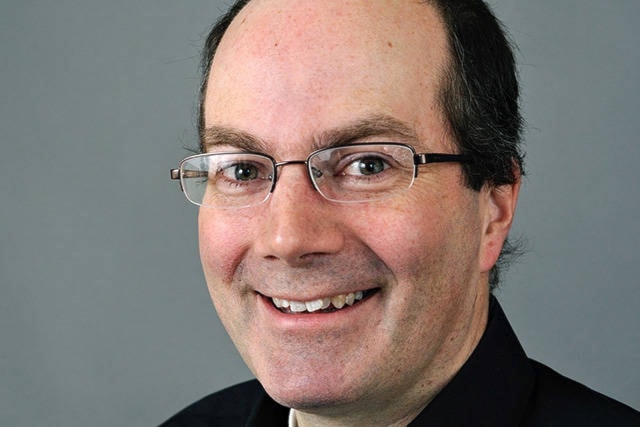Do you remember those old bricks of Neapolitan ice cream from birthday parties when you were a kid? The box promised stripes of chocolate, strawberry and vanilla, but the colours all tasted strangely similar.
The same thing is happening in our election. If you stripped the party platforms of their colours and rhetorical signals, and did a blind taste test, you would have a hard time telling them apart. Looking at the debt-fueled spending, expanded childcare, climate policies, universal health care and absence of tax cuts or oil and gas development in all three Yukon flavours, a blindfolded visitor from Alaska would declare they all tasted like the progressive wing of the Democratic party.
Political scientists call this convergence the median voter theory, which states that if voters are spread along a political spectrum then parties will seek to align themselves with voters in the middle of it. This suggests the parties believe the median voter in the Yukon likes big government, with the nozzle on the firehose of federal money set to “wide” to cover childcare, renewable energy, health care, education and housing.
One thing that would astonish our Alaskan friends is the absence of an equivalent to the Alaska Republican party. The Yukon Party platform does not contain the words “oil,” “gas,” or “gun.” It’s only mention of “freedom” is a sentence talking about how Yukon seniors “want to age with dignity and freedom in their own homes.”
A visitor from Germany, on the other hand, would notice the absence of a territorial Green Party in this election. The three mainstream parties all include significant climate measures in their platforms. The Yukon Party talks about a 10-year renewable energy plan, the potential of hydrogen and how the Yukon can contribute to Canada’s 2050 Net-Zero plan. The Liberals have a target of reducing the Yukon’s carbon emissions by 30 per cent by 2030, while the NDP would increase this to 45 per cent.
But none of them include a strategy to get to Net Zero, particularly around heating and transportation, that a European green party would find credible.
Nonetheless, like Neapolitan ice cream, if you pay enough attention there are differences between the flavours.
The NDP tastes slightly more left. They would add one per cent to the taxes of those making over $250,000, roughly the cut-off for the Yukon’s One Percent, to help pay for new programs.
Statistics Canada says we only had 180 people making that much in 2018 and they contributed about 10 per cent of Yukon tax revenue. Hitting them with another one per cent would likely raise less than half a million dollars, which is a rounding error for the Yukon government these days.
The NDP also propose a two per cent payroll tax on Fly-In-Fly-Out (FIFO) workers at mines. With around 600 workers in Mining, Forestry, Fishing, Oil and Gas now, making an average of $1610 per week, a two-per cent tax on the unknown number of FIFO workers is unlikely to bring in over a million dollars.
These new taxes are not enough to pay for the new basic dental care, new childcare benefits or other new programs their platform contains. Mind you, the other parties are heavy on promises and light on revenue too.
The NDP is also more expansive in its non-cash promises, including proportional voting and ordering the Yukon government communications apparatus to get in line with the rest of us and put “the” back in the “the Yukon.”
The Yukon Party tastes slightly more right. They would give their expanded childcare in a cash payment to every family with children rather than just those in official childcare facilities. They also promise a “one in - one out” rule on business regulation. Their platform also promises to develop a strategy to eventually eliminate the territorial debt. But, judging by the spending promises, this won’t be anytime soon.
The Liberal platform is in the middle. It is based on their promise-packed election budget released just before they called the election. However, within two weeks they seem to have come to the conclusion they weren’t spending enough for the median voter’s tastes. New items such as electric charging stations so you can drive your Tesla from Tuktoyaktuk to Vancouver are now part of the program.
The Liberals also promise to release 250 lots per year to address the housing crisis. This is higher than the 170-per-year averaged over the last three years, but may not be enough to keep up to the population growth forecast in their Spring budget documents that estimated an additional 750 people per year moving here through 2025.
The production values of all three platforms are also similar. All are slick and easy to read, with lots of bullets and attractive photos. Many of your favourite Yukon landmarks have been appropriated as political backdrops. Google reverse image search reveals that some of the parties didn’t find Yukoners sufficiently photogenic. You may recognize the older couple dancing in the NDP health care section from ads for Neyber, the British workplace lender and credit score rebuilder, or the old and young hands in the Liberal health care chapter from the Lifestyle section of the Mumbai Indian Express. That photogenic bear waving on the last page of the NDP platform starred previously in The Guardian.
I suggest you read each party’s platform and decide for yourself which flavour you would pick for the next four years. On April 12, we’ll see if we get a government of a single flavour or if the Legislature itself goes Neapolitan.
Keith Halliday is a Yukon economist and author of the MacBride Museum’s Aurore of the Yukon series of historical children’s adventure novels. He is a Ma Murray award-winner for best columnist and received the bronze for Outstanding Columnist in the 2019 Canadian Community Newspaper Awards.
